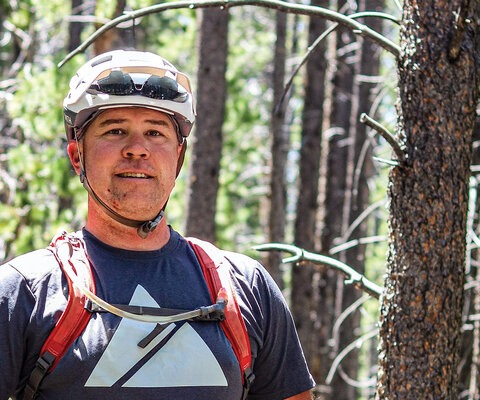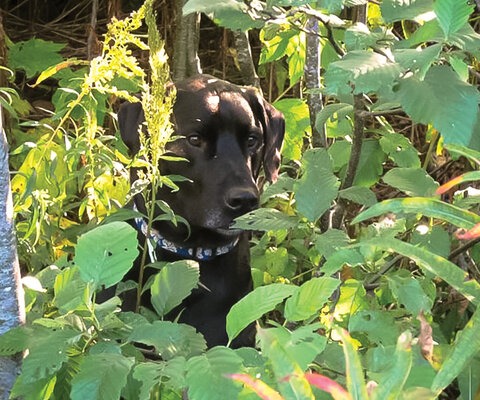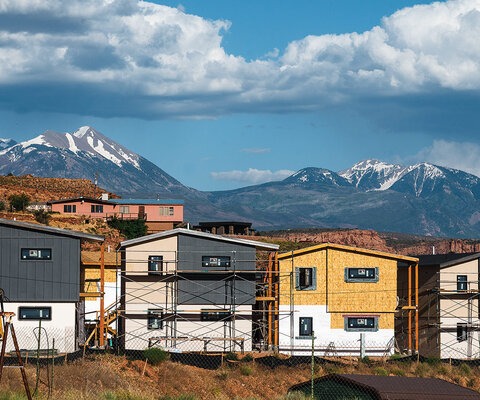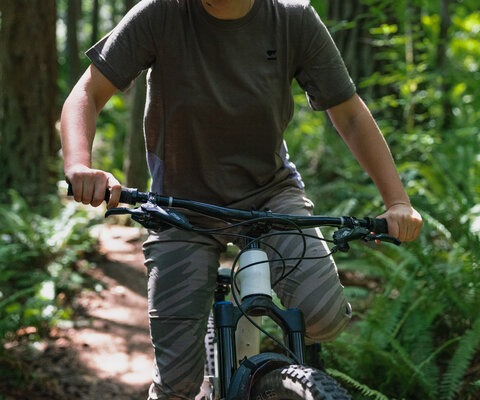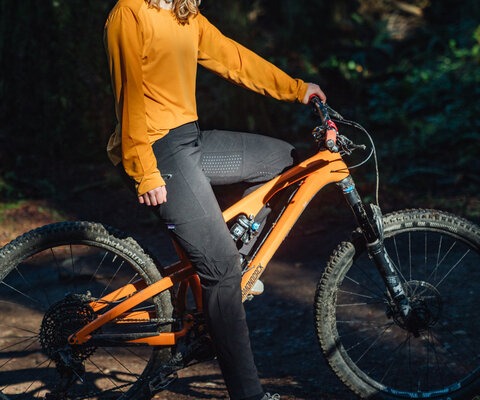
High Standards Tom Stuessy's Vision for Vermont
Words by Berne Broudy
When Tom Stuessy took the job as executive director of the Vermont Mountain Bike Association (VMBA), the organization’s bank account had only $3,800 in it.
The previous executive director had just moved to Arizona to work for IMBA, most trails weren’t mapped, clubs were competing for sponsors and a lot of the riding was a backyard rake-and-ride affair.
Stuessy inherited the awesomeness of the Vermont trail network, as well as the problems inherent in trails built primarily on private land. That small chunk of change could have funded a few batches of T-shirts or bought a decent collection of trailbuilding tools, but it wasn’t going to pay his salary or buy statewide insurance for clubs. To do that, Stuessy would have to reimagine how VMBA functioned.
Today, my house in Richmond, Vermont, has seven hours of singletrack behind it—all on private land— where I can ride my bike whenever I want. I refer to the network as “my trails,” but they aren’t private: They’re part of a mapped, multi-use network made possible by private landowners who’ve allowed the trails to exist. They’re built and maintained by volunteers. And there are about a thousand miles of these trails crosshatching Vermont. That’s a lot of singletrack in a state that’s 159 miles long and only 89 miles at its widest.
Landowners allow the trails to exist, volunteers build them, but it’s Tom Stuessy who really deserves credit for the health and growth of Vermont riding.
Stuessy, 45, grew up in Monroe, Wisconsin, playing baseball, drums and wanting to be the Green Bay Packers’ quarterback. Instead, he landed in Vermont, where he took up mountain biking, and taught adventure education at Green Mountain College.
“When I told my wife, Mary, I wanted to take the job,” Stuessy says, “she thought I was crazy. But there was so much potential, so much rider interest in more trails and more access. There was a desire to shift the culture, a readiness and willingness paired with a fear of getting swept up and losing control, and we started to look at what we could do if we all worked together.”
Stuessy formulated a pipe-dream vision in which mountain bikers would help grow Vermont’s economy with a world-class trail network that would bring visitors from Boston, New York, Montreal and other areas. Local control was critical. Under his plan, no one would demand that private networks go public. But VMBA would identify and grow a trail network that could be shared and promoted in Vermont and beyond.
Stuessy schemed to entice Vermont mountain bikers and visiting riders to join one or more VMBA chapters, and he channeled that money back into clubs for trail-building. He postulated that if VMBA took on administrative duties, like managing memberships, securing nonprofit status and arranging insurance, then local chapters would be able to focus on what they do best—building trails. He saw the opportunity to support rural economies by connecting small towns and villages by trail, and through a digital-information hub directing riders to trail- and bike-friendly businesses. In his vision, mountain bikers became stewards of the land, as well as partners with state and local land-management agencies. He didn’t just want more riding; he wanted trails that benefitted riders, businesses, and the state’s economy and ecology.

It was ambitious, but not impossible. The then-Vermont Tourism Director, Megan Smith, along with the Vermont-based Lintilhac Foundation, saw the plan’s potential. In tandem, they committed support. Then, Stuessy launched a yearlong, statewide tour to connect with the stakeholders.
A graduate of Western Colorado University, Stuessy went on to get a PhD focused on adventure education and education psychology from Indiana University at Bloomington. When he moved to Vermont, he was a whitewater boater, but he didn’t have the necessary support network to safely tackle Vermont’s technical steep-creeking. Riding a mountain bike was something he could do by himself, though. So, he traded his paddle for pedals, sold his whitewater equipment and focused his time and resources on mountain biking. It quickly became a social outlet, as well as a physical one.
In late 2011 and early 2012, as VMBA members grappled with the question of whether the nonprofit should even exist, Stuessy came to meetings and shared ideas and strategies from his deep nonprofit experience.
“All the right people were having all the right kinds of conversations about the best path forward,” Stuessy recalls. “What got me interested was everyone was looking for common ground and how to maximize VMBA’s potential.”
He got the executive director job because he was the only person coming up with meaningful, if ambitious, ideas for ushering the organization and mountain biking forward. Also, no one else wanted it.
At first, riders were skeptical of his potential. They didn’t know what to make of him and his big plans. He doesn’t drink, he rode a clapped-out bike and had no trailbuilding experience. Yet he was making big promises. He was replacing an executive director who was a strong rider, who hung with the boys and got his hands dirty.
Vermont had 15 clubs, and about 1,000 members across the state. For every chapter member, each club gave VMBA $5 toward advocacy. Stuessy asked for that number to be raised to $8 per member to help VMBA provide more substantive services. It was a hard sell.
“Every time I walked into a meeting, I felt like the question was, ‘Who’s the dude in the Green Bay Packers hat?’ not ‘Can we be a world-class riding destination?’” Stuessy says. “Nearly everyone I talked to told me they had started VMBA. It took me months to realize that in fact it was true, and that VMBA needed to be owned by the riders. I wanted consensus, not majority rule.”
He kept faith in the process and scheduled more meetings. After every conversation, Stuessy went back to the drawing board and tweaked the plan.
At the time, riding trails in Vermont was akin to running a Class V river. Trails were steep and slippery, with chundery roots and rocks. Many were barely maintained, and some were intentionally hidden. His rider friends from Colorado would ask, “Where’s the flow?” and, after a couple of hours on the trail, would complain their arms hurt. There were few beginner or even intermediate trails, which made getting into the sport hard. Furthermore, trails were known to close whenever landowners found evidence of illegal building, or if neighbors complained about too much trail traffic.
“With just hardcore riders in charge, we had 35 members,” says John Atkinson, executive director of Mad River Riders. “It wasn’t working.”
Stuessy’s diplomatic persistence finally paid off when the Chittenden County-based Fellowship of the Wheel (FOTW), Vermont’s second-largest club, agreed to support VMBA’s vision.
But he knew he had to prove to FOTW and other chapters that their investments in VMBA would pay off, and he barely had the money to keep the lights on in his home office. Most of Vermont’s trails are built and maintained by volunteers and paid for by donations. Stuessy knew obtaining a grant to pay for trail work, tools and materials would bring his long-term vision to life. Toward this end, FOTW President Steve Fischer seeded the grant with a $6,000 donation.
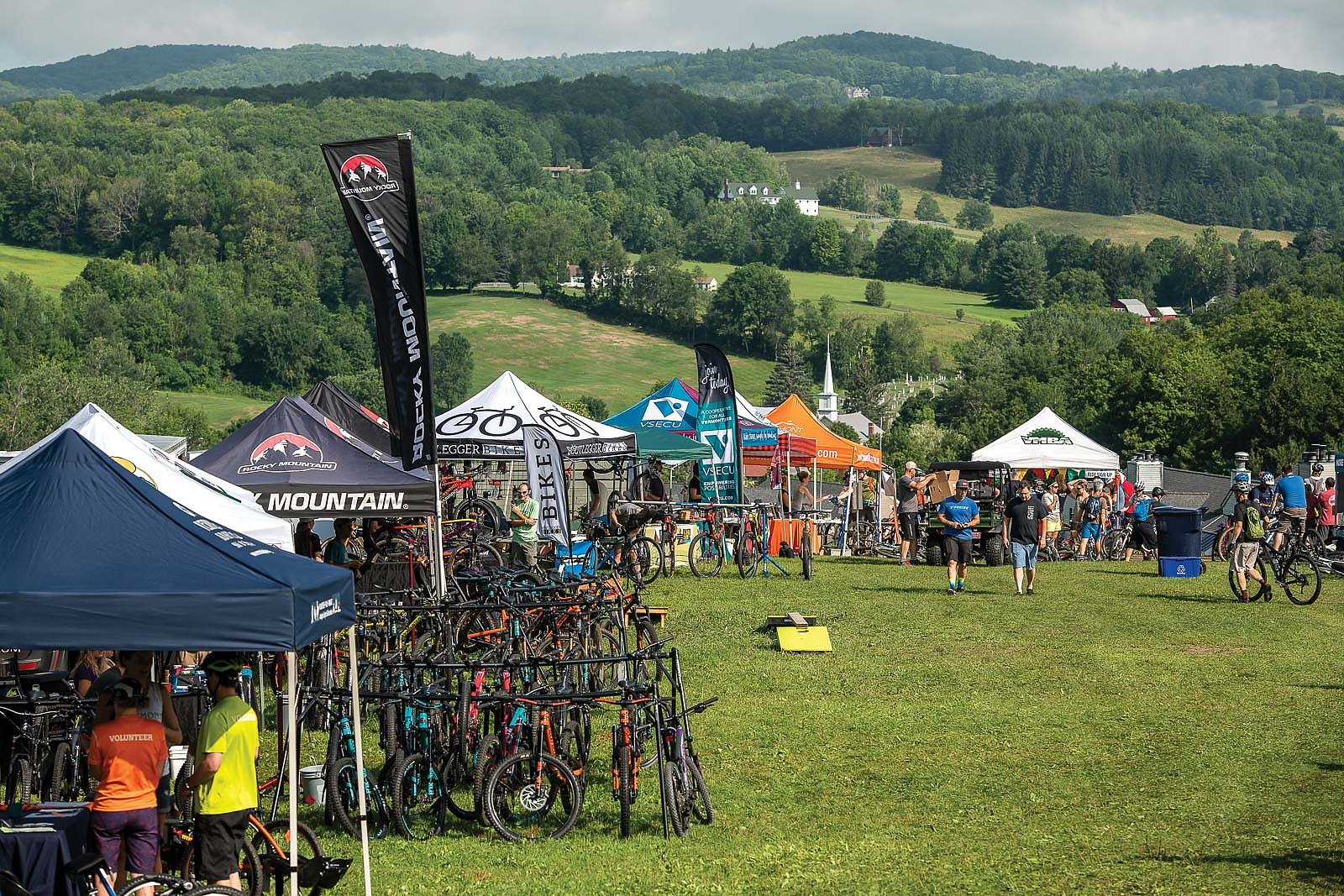
“I love mountain biking, I liked where he was headed, I had the means to help, and I did,” Fischer says. “Tom is like a dog on a bone. Once he locks onto something, he does not give up.”
The trail grant got the attention of the chapters. Holdout clubs joined, and Stuessy scraped together money for a statewide website, where new members could join VMBA and as many other chapters as they wanted. And nearly all of the funds that were generated went back into local chapters.
“It took the administrative burden off chapters,” Atkinson says, “and it was a keystone of Tom demonstrating that VMBA wasn’t trying to replace chapters, but to implement a statewide vision that respected local desires.”
Since 2012, Stuessy has grown VMBA into the largest statewide mountain bike organization in the United States. He’s united Vermont’s ferociously independent, passionately outspoken community of riders under a statewide umbrella organization. He’s funded hundreds of miles of new, legal mountain bike trails through grants to local chapters, and by crafting and promoting legislative changes. During this time, membership has grown from about 1,000 to more than 5,300 members, and the number of local chapters has doubled.
In addition, Stuessy has rallied state and local government officials, as well as Vermont businesses, behind mountain biking, showing them what riding can mean for the state’s economy. In making Vermont more mountain bike friendly, he’s also helped to change the rules around public funding for private land projects nationally, making more money available for trails with fewer restrictions. And he’s created a replicable membership model that gives power to locals and channels dollars to trails.
“The connections we’ve made because of VMBA are as important as the members and money,” Atkinson says. “We’re working together, sharing what we’ve made, and trying to make it easier for everyone.”
All VMBA chapters have tax-exempt status, insurance that protects landowners, and access to trail-building clinics and models of effective advocacy. In 2018, VMBA chapters got 126 percent of the membership dollars they paid to VMBA back in the form of trail grants. One of the biggest victories is that VMBA chapters are now embraced as land-management partners by both state and federal forestry departments.
One of those chapters is Atkinson’s, the Mad River Riders. In an area once dominated by hard-to-find trails filled with rock gardens and teeth-rattling descents, machine-built flow trails have been cropping up. Now, rather than parking at a pull-off and scrambling up a loose scree slope to access a great descent, there’s a designated parking lot for a meandering, switchback-filled, dual-direction trail that caters to beginner and intermediate riders and huck-loving chargers alike. A network called Blueberry Lake gives beginners a chance to find their legs, but it’s not boring for advanced riders. Atkinson now manages an annual budget of almost $100,000, and Mad River Riders’ membership has multiplied.
“VMBA’s success with organizing Vermont’s mountain bikers laid the foundation for us to work with them on federal land,” says Holly Knox, district recreation program manager in the Rochester and Middlebury Ranger District, Green Mountain National Forest. “Tom’s work as a visionary and planner is supporting the sustained future of mountain biking in Vermont. He’s engaged public land managers, he’s helped bring rogue trail-building above board, and, as a result, trails are more sustainable, and they can be supported by land managers.”
This summer, with Stuessy’s support, chapters between Killington and Stowe will break ground on Vermont’s most ambitious trail project yet: the Velomont Trail, an 88-mile ribbon of dirt on state, federal and private land that is envisaged to eventually stretch from Massachusetts to Canada. It will also offer the opportunity for other networks to build access trails branching off the main trunk.
The Velomont Trail project, however, has opened a can of legislative worms. Due to one of Vermont legislation’s sacred cow —Act 250, a 1970s Land Use and Development Act designed to check development by addressing the environmental and community impacts of big projects—making a trail across the state involves a staggering amount of legal red tape. Despite formidable obstacles, Stuessy is approaching this challenge with a calm, level-headed demeanor. He’s also hired a lobbyist.
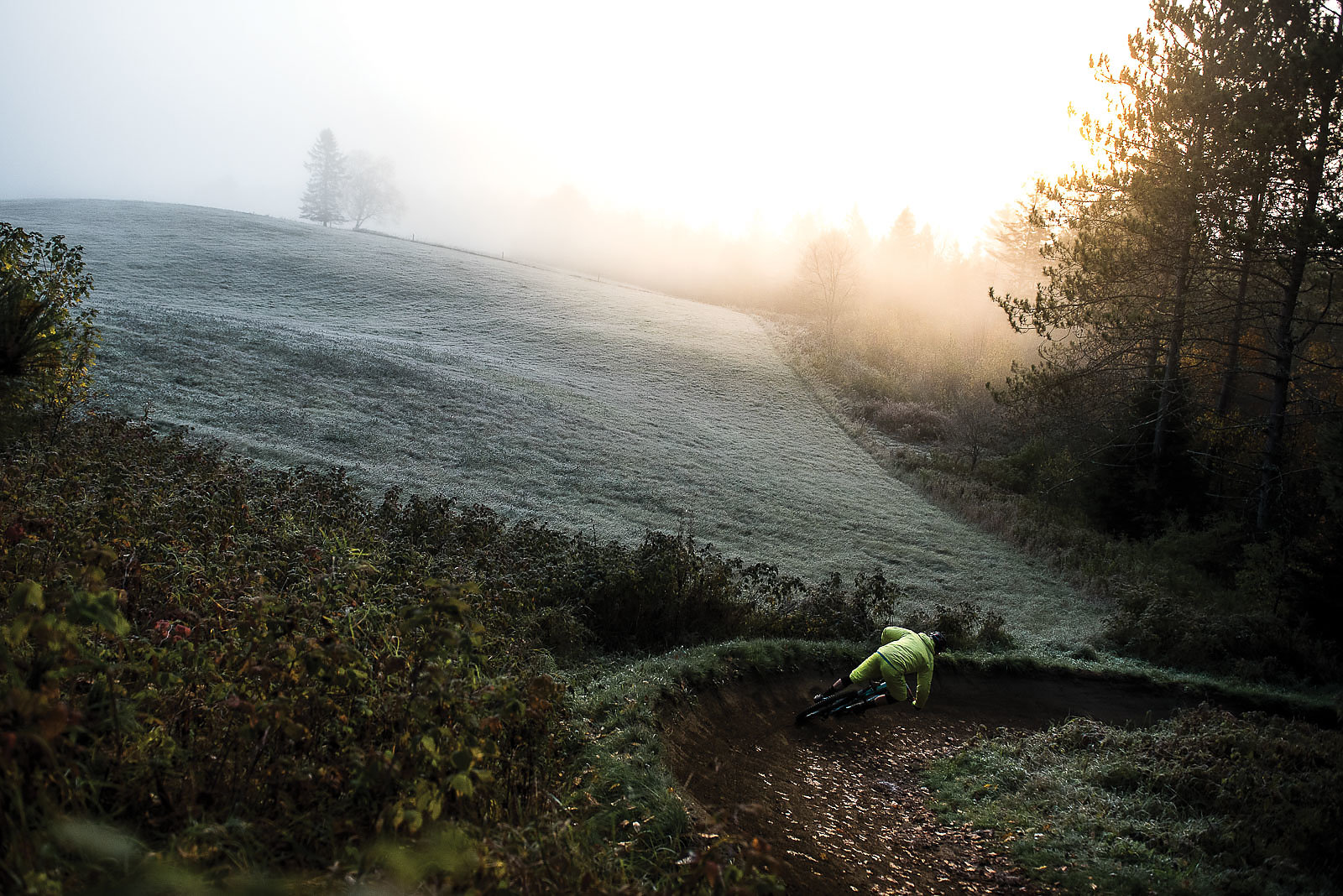
“Trail-based recreation is contributing somewhere around $2.5 billion annually to Vermont’s economy,” Stuessy says, “and that’s not including skiing. We need the state to value what trails mean to Vermonters’ health, to recognize recreation’s worth to individuals and to business by funding VMBA and other trail-based nonprofits. Everyone is out there after work, working on trails, but that’s not enough to maintain what we’ve already built. The state is talking a lot about growing the recreation infrastructure to attract people to Vermont, but we rely on a volunteer base. It’s deep, but it’s limiting us.”
In 2018, VMBA volunteers logged more than 30,000 hours of work. Stuessy was able to track those hours, thanks to the Cabot Cooperatives Volunteer Rewards program, which gave VMBA volunteers an entry into a mountain-bike raffle for every hour they put in, as well as coupons for Cabot’s delicious cheese.
“Anytime we can support outdoor recreation in our state, we do it,” says Danielle Poirier, Cabot’s integrated services producer, and a new member of VMBA’s board. Additionally, Cabot built VMBA’s new website and funded trail grants. “Our farmers volunteer in their communities,” Poirier says. “We see mountain bikers volunteering, and we want to support that. Mountain biking is exploding, and most of Vermont’s ridership is from somewhere else. There’s an economic opportunity there as well.”
That’s not VMBA’s only growing pain: Stuessy doesn’t have the money to fund trail-building at the pace the clubs want. New membership is overwhelming his staff of two part-time employees, and though he needs to spend money on operations, Stuessy is loath to take a dime away from the chapters. But, unlike six years ago, when clubs didn’t want their membership dollars to pay for Stuessy’s salary (or anything else related to administration), chapters are now begging him to get more help.
Stuessy holds himself to an impossibly high standard. “I very highly value time people put in to create
Vermont’s trail network—it benefits a huge number of people and businesses,” he says. “It is my personal and professional responsibility to represent that effort well. If I come up short on chapters’ expectations, I take full responsibility.”
I meet with Stuessy to ride Chamberlain Hill, a new, 3.5-mile network in Richmond, Vermont, built last summer by two teenage trail-builders and at least 15 volunteers with the help of a VMBA trail grant.
We pedal around smooth switchbacks, crisscross old logging roads and skirt moody ravines while climbing 600 feet to the summit. On the descent, we swoop through curves, roost loamy hillsides and hammer back to the connector trail with face splitting grins. Along the way, we’ve passed kids on striders, XC riders, enduro junkies, runners, dog walkers, and a couple searching for wildflowers.
“Seeing stoked people on trails goes a long way toward fueling me,” Stuessy says.
As it turns out, so does coffee. Saw Dog Coffee Roasters is his side business with his wife, Mary. Stuessy says running this business is relaxing, and a good college-savings plan for their daughter, Sawyer. The Stuessys give 10 percent of Saw Dog’s profits to the White Helmets, a Syrian rescue organization, and they only use fair-trade, organic Café Feminino beans.
Stuessy’s undaunted by the work that lies ahead for VMBA, as long as he can hire more staff and possibly surrender a project or two.
“The list of things that need to be done is almost possible to achieve,” Stuessy says. But even so, he says completing this list and calling it a success is almost too easy because it doesn’t acknowledge Vermont mountain biking’s true potential.
“I want to find an equilibrium where the yahoo factor of mountain biking is in balance with ecological awareness,” he says. “I want chapters to feel consistently well-represented and for VMBA to remain fluid enough to stay in front of the evolving nature of mountain biking, and of Vermont.”
It’s a goal without end, which means Stuessy has his work cut out for him. But he’s never been one to coast.
